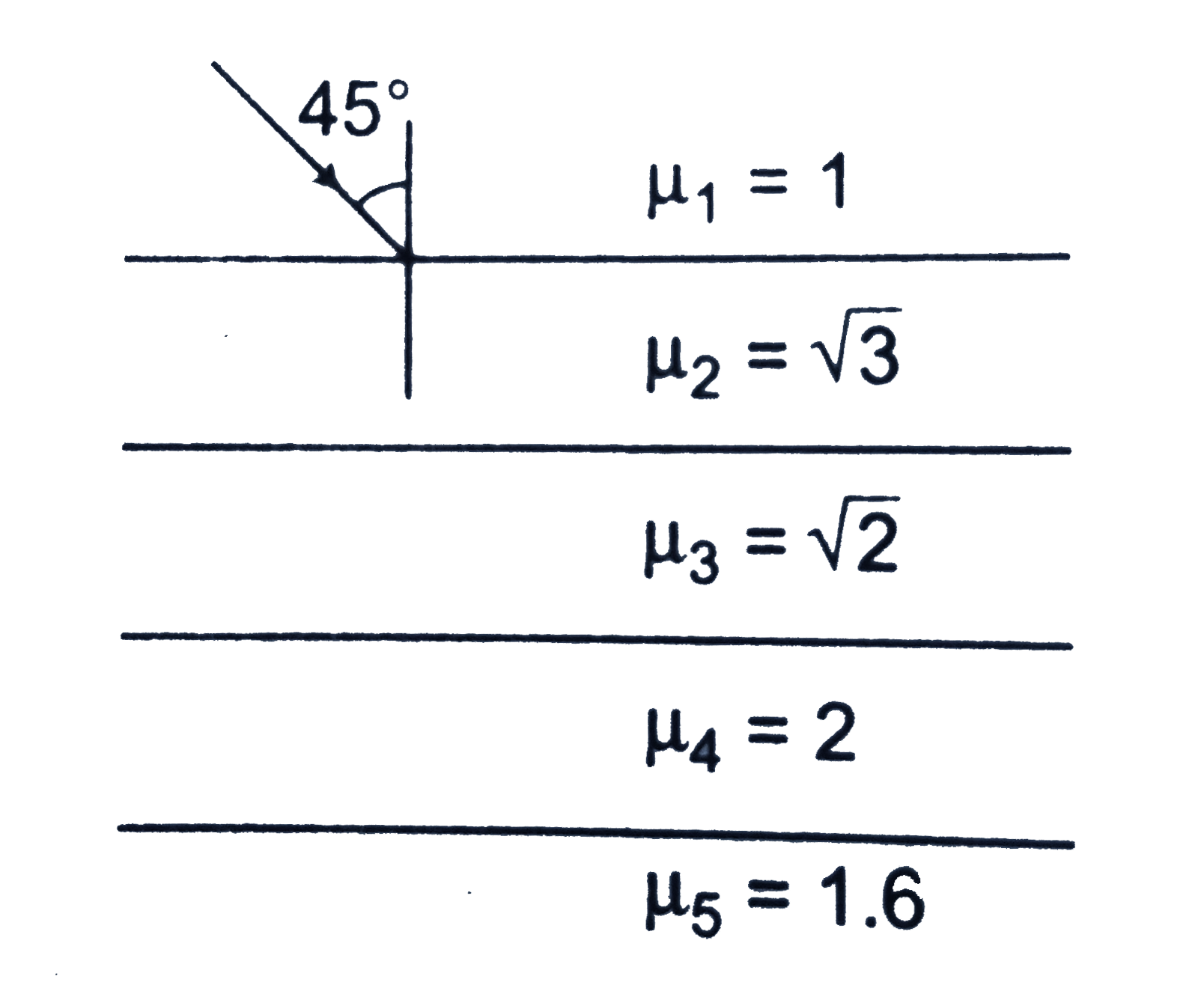A ray of light has speed , frequency a wavelength in vacuum. When this ray of light enters in a medium of refractive index corresponding values are v, f and . Then
its wavelength increases, frequency decreases
its wavelength decreases, frequency remains same
its wavelength increases, frequency remains same
and
The correct Answer is:b.,d
Whenever a ray goes from one medium to another, its frequency remains same. Its wavelength changes in accordance
with constant. i.e.,
So, decreases when it goes from rarer to denser medium and vice versa.
Topper's Solved these Questions
- WAVE OPTICSBook:CENGAGE PHYSICS ENGLISHChapter:WAVE OPTICSExercise:Multiple Correct
Explore 8 Videos
- WAVE OPTICSBook:CENGAGE PHYSICS ENGLISHChapter:WAVE OPTICSExercise:Assertion- Reasoning
Explore 13 Videos
- WAVE OPTICSBook:CENGAGE PHYSICS ENGLISHChapter:WAVE OPTICSExercise:Subjective
Explore 11 Videos
- SOURCES OF MAGNETIC FIELDBook:CENGAGE PHYSICS ENGLISHChapter:SOURCES OF MAGNETIC FIELDExercise:single correct Ansewer type
Explore 12 Videos
Similar Questions
Knowledge Check
When a ray of light from air enters a denser medium, it :
Abends away from the normalBbends towards the normalCgoes undeviatedDis reflected backWhen a light ray enters from a denser medium to a rarer medium.
AThe light ray bends towards the normal.BAngle of incidence is less than angle of refraction.CSpeed of light decreases.DSpeed of light remains unchanged.
When a light ray from a rarer medium is refracted into a denser medium, its
View SolutionThe wavelength of light in vacuum is 6000A∘ and in a medium it is 4000A∘ The refractive index of the medium is:
View SolutionTwo light waves having the same wavelength λ in vacuum are in phase initially. Then the first ray travels a path of length L1 through a medium of refractive index μ1. Then second ray travels a path of length L2 throug a medium of refractive index μ2. The two waves are then combined to observed interference effects. The phase difference between the two, when they interfere, is
View SolutionTwo light waves having the same wavelength λ in vacuum are in phase initially. Then the first ray travels a path of length L1 through a medium of refractive index μ1. Then second ray travels a path of length L2 throug a medium of refractive index μ2. The two waves are then combined to observed interference effects. The phase difference between the two, when they interfere, is
View SolutionIn the figure shown, the angle made by the light ray with the normal in the medium of refractive index √2 is

View SolutionA ray of light of wavelength u0 and frequency v0 enters a glass slab of refractice index μ from air. Then
View Solution